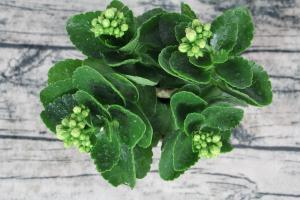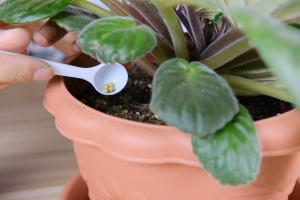What to Feed Baby Tomato Plants
Tomatoes are a popular and versatile fruit that can be grown in a variety of ways, but they require proper care and feeding to grow healthy plants and produce a bountiful harvest. Feeding baby tomato plants is critical to ensuring that they develop strong roots and healthy foliage, as well as produce juicy, ripe tomatoes.
The Basics of Tomato Nutrition
Tomatoes require several essential nutrients to grow and produce fruit. Nitrogen is essential for plant growth and helps plants develop strong roots and foliage, while phosphorus and potassium are necessary for flower and fruit formation, as well as overall plant health. Additionally, micronutrients such as calcium, magnesium, and iron are necessary for proper plant growth and development.
Organic and Inorganic Fertilizers
Organic fertilizers such as compost, worm castings, and bone meal offer a slow-release source of nutrients and help improve soil structure and fertility. These types of fertilizers are ideal for gardeners who want to grow tomatoes more naturally, without the use of synthetic chemicals.
Alternatively, inorganic fertilizers like granular or liquid fertilizers can provide quick and targeted nutrient delivery. Consider fertilizers with balanced NPK ratios, as well as micronutrient supplements to ensure that your tomatoes receive all the nutrients they need.
Types of Feeding Methods
There are several methods for feeding baby tomato plants, each with its unique advantages and challenges. Understanding these methods can help you choose the best method for your garden and growing style.
Top Dressing
One of the simplest and most natural ways to feed your baby tomato plants is through top dressing. This method involves adding a layer of organic matter, such as compost or worm castings, to the top of your soil around your plant's base. The organic matter will gradually decompose over time, releasing nutrients into the soil.
Foliar Feeding
Foliar feeding involves applying a liquid fertilizer or nutrient-rich solution directly to the leaves and stems of the plant. This method can deliver quick and targeted nutrient uptake, but it's essential to avoid using foliar sprays during peak sun exposure or when temperatures are too hot to prevent leaf damage.
Drip Irrigation
Drip irrigation is an efficient watering method that can also be used to deliver fertilizers or nutrients to your plants' root systems. Consider using a fertilizer injector to mix liquid fertilizers into your irrigation water and deliver consistent nutrient uptake throughout the growing season.
When to Feed
Knowing when to feed your baby tomato plants can be just as important as knowing what to feed them. Depending on your growing method and the type of fertilizer, you may need to feed your plants every two to four weeks during the growing season.
It's essential to read fertilizer label instructions carefully and avoid over-fertilizing, as this can lead to poor overall plant health and reduced yields. Lastly, remember to water your plants well after feeding to ensure proper nutrient absorption.
Final Thoughts
Feeding your baby tomato plants requires a careful balance of nutrients, growing methods, and timing. Whether you choose organic or inorganic fertilizers or opt for top dressing, foliar feeding, or drip irrigation, it's vital to understand how to nourish your plants to grow healthy and productive tomato plants.
By providing proper nutrition, you can help your baby tomato plants develop strong roots, healthy foliage, and produce juicy, delicious fruit that you can enjoy all season long.

 how many times do yo...
how many times do yo... how many planted tre...
how many planted tre... how many pine trees ...
how many pine trees ... how many pecan trees...
how many pecan trees... how many plants comp...
how many plants comp... how many plants can ...
how many plants can ... how many plants and ...
how many plants and ... how many pepper plan...
how many pepper plan...
































